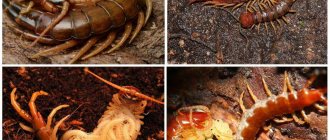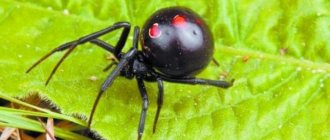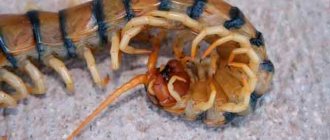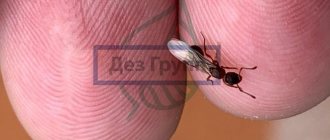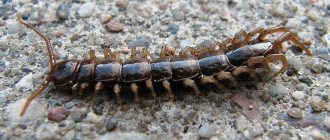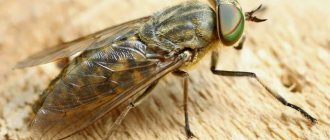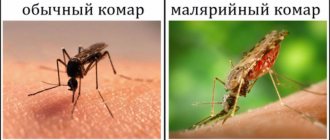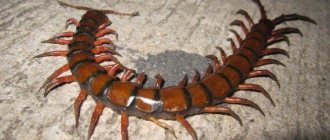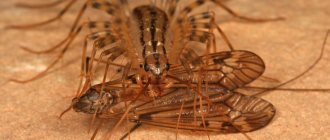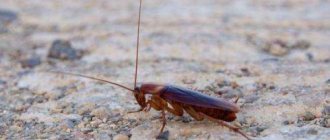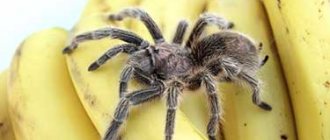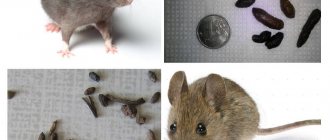Summer is a period of vacations. And everyone strives to spend it where the bright sun shines, the sea waves splash, and the mountains rise. The diverse flora and fauna of these places is often unusual for a traveler. And although getting to know him is very educational, it is sometimes dangerous. So, a bite from a centipede, a centipede common in southern latitudes, could seriously ruin your summer vacation. And although its poison is not fatal to humans, it is capable of causing illness for several days.
What kind of animal is this and how to make sure your paths don’t cross? Where does scolopendra live and what to do if it bites? Let's figure it out.
What conditions does scolopendra live in?
In most cases, it can be found in warm places with high humidity. She prefers loose soil and sand. But there is a possibility of finding a dangerous centipede under a layer of pebbles, in wood, various crevices, in bushes, and also under fruits that have fallen to the ground. It often takes up residence in home environments, such as basements or foundation areas.
Scolopendra prefers loose soil and sand
The lifestyle is nocturnal, so it is necessary to inspect your home, tent or your clothes for scolopendra first in the morning. It feeds on small and large insects: grasshoppers, spiders, and sometimes reptiles, such as small lizards.
Do centipedes bite?
Many representatives of the centipede class, which also includes the centipede, are predatory creatures. These arthropods are not averse to feeding on a fly or beetle, or even larger prey.
However, the small size of most insects does not allow them to choose larger prey. Scolopendra is a completely different matter.
This large invertebrate animal doesn't just bite, it injects poison into the body of its prey and then slowly chews it.
The body of a centipede consists of 21–23 sections, each of which is equipped with a pair of limbs. The front legs, located on the head, in the process of evolution turned into powerful jaws. The arthropod bites off pieces from its prey and plunges them into its mouth.
These insects bite if they are frightened or disturbed. A hungry scolopendra is also quite aggressive; teasing it in this state can lead to an attack.
The question of whether scolopendra bites is most often asked by potential owners of these exotic insects and people who go on vacation far from home. Due to the bright colors of some species and their noticeable size, these centipedes are extremely popular among breeders.
Scolopendras are the most famous, but far from the only representatives of their superclass. In addition to them, other centipedes, such as the flycatcher, also bite.
What does a scolopendra bite look like?
Scolopendra does not attack the person itself, but bites as self-defense. The size of the bite directly depends on the size of the centipede itself. If large individuals are able to leave a significant mark, then small representatives will not even be able to bite through human skin. For this reason, the bite site may simply look like a swollen, inflamed, red area or have clearly visible bite marks.
Scolopendra bite
Using teeth and the claws closest to the head, the insect makes wounds on the skin and injects poison. But there is no need to panic right away; this poison is not toxic enough to be fatal to humans.
When to see a doctor?
- If you are allergic to insect bites.
- In cases of bites to the soft tissues of the face.
- If necessary, tetanus prophylaxis.
- If a scolopendra bites a small child.
- If after first aid the symptoms intensify: shortness of breath, rapid heartbeat, pallor of the skin, swelling of the face and neck.
In these situations you need to seek medical help
Any doctor who is nearby can provide emergency assistance. After the condition has stabilized, you can contact a specialist in the field of toxicology.
Scolopendra bite - symptoms
The sensation of being bitten by a predatory centipede can affect people to varying degrees. It all depends on the species, size of the individual and the individual characteristics of the human body. The sensations may be similar to the bite of an ordinary wasp, or may be expressed in severe pain.
Symptoms may look like this:
- Feeling of pain, itching or burning in the affected area;
- High blood pressure and rapid heartbeat;
- Headache;
- Nausea and vomiting;
- Dizziness and general weakness of the body;
- High body temperature and fever;
- Increased anxiety.
In rare cases, swollen lymph nodes, numbness in the bite area, and medium-sized blisters may occur. It may be possible to find small wounds on the body from the claws of the insect, left during its movement.
What to do if you are bitten by a scolopendra: first aid
As a rule, all that happens after a centipede bite is the manifestation of clinical signs for several days, after which they safely disappear. Therefore, in most cases, going to a medical facility is not required. The exception is the increased risk of complications.
First you need to wash the bite site. Simple running water and a little soap will do for this. It is best to treat washed and dried skin with an antiseptic to prevent contamination from entering the wound. To do this, it is best to use alcohol, vodka, a solution of furatsilin or potassium permanganate. All that remains is to apply a sterile bandage on top.
If possible, it is better for the patient to adhere to bed rest and drink drinking water in large volumes. This will allow you to remove toxic substances from the body as quickly as possible.
First aid for a predatory insect bite also comes down to treating existing symptoms.
Examples of actions might include:
- Taking painkillers. Their type and dosage depend on the degree of pain; in special cases, lidocaine injections are acceptable. Alternatively, you can apply a piece of ice or, conversely, a warm heating pad to the bite site. In some cases, heat has a positive effect on the breakdown of the toxic substance;
- Use of antibiotics in case of infection of the body;
- Antihistamines. Help reduce itching and swelling in the affected area, as well as prevent an allergic reaction;
- Administration of anti-tetanus serum if necessary.
What not to do if you are bitten
When bitten by a scolopendra, it is strictly not recommended to cauterize a fresh wound.
When providing first aid, you must be careful, since not all methods are suitable for a bite of a predatory centipede. Here's what you absolutely shouldn't do in this case:
- Apply a tourniquet if the bite is on an arm or leg. Unfortunately, it will not be able to prevent the spread of toxins throughout the body. But he is quite capable of provoking blood stagnation, tissue necrosis or the development of gangrene;
- Cauterize a fresh wound;
- The venom is not lethal, so there is no point in cutting the skin and trying to suck it out;
- Drink alcoholic drinks. They can help speed up the absorption of the poison.
Otherwise there are no serious restrictions.
Description
The scolopendra, which looks like a caterpillar, has a hard shell and a large number of clawed legs located along the entire body. The predator, whose maximum body length can reach 26 cm, hunts beetles, various invertebrates, as well as birds, lizards and rodents.
On a note!
The centipede's bite is its main weapon, thanks to which it not only hunts victims, but is also able to protect itself. She is not afraid of people either, attacking a person in moments of danger.
Prevention from scolopendra bites
It is impossible to predict a collision with scolopendra 100%, but you can reduce the risk as much as possible. To do this, while in open nature, it is necessary to observe the following series of preventive measures:
- Before going to bed, you need to inspect the interior of the tent, and only then close it and go to bed. Particular attention should be paid to bedding;
- If things were lying on the ground, for example, while swimming, then before putting them on, you should carefully shake everything out and inspect it;
- If you plan to make a fire and there is a need to collect firewood, you should pay close attention to this matter, since centipedes often hide next to plants and tree branches;
- When working with soil, it is advisable to have protective gloves on your hands;
- If you find a large centipede, you should not try to pick it up, examine it, or scare it. You can run into a bite from a scolopendra, which just wants to provide itself with protection.
There is a risk of encountering arthropods in a summer cottage, for example, while digging the ground. In this case, it is better to just let him leave quickly.
Consequences of a bite
The consequences of a scolopendra bite, as well as its symptoms, depend on the type of individual and the general state of the victim’s immune system. If a person does not have any health problems, then the painful symptoms will pass without consequences for the body. Otherwise, if the person bitten is in poor health or has serious chronic diseases, then there is a risk of developing complications. A few examples of why a scolopendra bite is dangerous in some cases:
- Infection through open wounds;
- Traumatization of muscle tissue in the form of its decay or necrosis;
- Anaphylactic shock;
- Kidney failure.
In particularly dangerous cases, myocardial infarction is possible, although the risk of its occurrence is quite low. Depending on the diagnosis, consultation with an allergist, nephrologist, cardiologist or surgeon may be required.
Post Views: 204
Area
There are more than 550 species of centipedes. Most of them live in tropical and subtropical zones. The most famous representatives of the species are the following.
- The giant scolopendra lives in South America and the Antilles. It is the largest (up to 26 cm in length) and poisonous of all representatives of the species. Contrary to popular belief, the bite of a giant scolopendra is not fatal to an adult.
- The ringed scolopendra lives in the Mediterranean, Central Asia, Southern Europe and Transcaucasia.
- Scolopendra Lucas lives in southern Europe. Has a heart-shaped head.
- The Californian scolopendra, which inhabited the south of North America and Mexico, leads a predominantly diurnal lifestyle. When bitten by a person, it can cause rhabdomyolysis - the destruction of muscle tissue cells, and acute renal failure.
- The Vietnamese scolopendra lives in Asia and Australia. Its size is up to 20 centimeters. When bitten, it releases a phosphorus-containing poison that causes severe skin burns.
- The red Chinese scolopendra lives in Eastern China and Australia. This is the most “social” centipede, not avoiding living together with its relatives. Used for medical purposes.
- Centipede waterfall, found in Thailand and Vietnam, is a twenty-centimeter amphibious waterfowl.
In addition, there are Indian tiger and blue Sumatran centipedes, named after their habitat.
Scolopendra in Russia
There are two species of centipedes living on the territory of the Russian Federation: ringed (Crimean) and Asian.
Ringed scolopendra
The ringed scolopendra can be found in the south of Russia, on the Black Sea coast, in Transcaucasia and Central Asia. This is a heat-loving animal that does not tolerate frost. It has a reddish color and reaches a length of 10–15 centimeters. With the help of ten pairs of legs, it reaches speeds of up to 40 cm/s. The lifespan of ringed centipedes can reach seven years. They reproduce by parthenogenesis. While expecting offspring, they are especially aggressive. The venom of the ringed scolopendra cannot kill an adult. However, death cannot be ruled out if an allergic reaction occurs, accompanied by anaphylactic shock.
Asian scolopendra
In the Primorsky Territory there are single individuals of Asian centipedes, which are widespread in more southern regions. This centipede is up to 20 centimeters long. There is only one known case of death when it bit a person.
flycatcher
The flycatcher, a predatory centipede that is often confused with the centipede, also lives in Crimea and the Black Sea coast. It often penetrates a person’s home. Its prey is flies, moths, and ants. For people, it is practically harmless, since its jaws are not able to bite through the skin. Unlike scolopendra, it can hunt in the daytime and is better adapted to lower temperatures.
